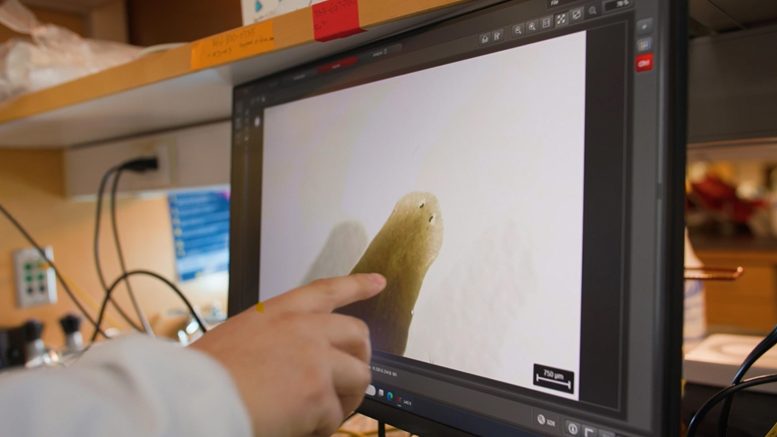
Uncovering the secrets behind their immortality could provide valuable insights into aging in mammals, including humans.
As we age, the body undergoes natural changes, including the gradual loss of neurons and muscle mass, along with a decline in fertility and the ability to heal wounds.
Previous studies in animals have identified several strategies, such as exercise and calorie restriction, that can slow aging or rejuvenate specific tissues.
However, reversing aging in blood cells or across an entire organism has remained out of reach.
Longhua Guo, Ph.D., assistant professor of Molecular and Integrative Physiology and Cell and Developmental Biology at U-M Medical School, has been interested in planarians (Schmidtea mediterranea) as a model system for aging research because they are considered immortal, and can regenerate body parts, even so far as to grow new heads after being decapitated.
“People have been aware of planarians’ regenerative capacity for more than 100 years. But very little is known about how they regenerate and why they live seemingly forever,” said Guo, who is a member of the U-M Institute of Gerontology.
His lab is examining the aging process in sexually reproducing planarians in order to more readily define their age, starting from the zygote stage.
Signs of Aging, and Reversal, in Planarians
From fertilization to around 18 months, planarians, like mammals, show signs of decline, notes Guo, including the loss of neurons, muscle and diminished fertility. One of their more obvious signs of age are abnormal changes in their eyes over time.
When the older planarians’ heads were removed, however, they generated new heads with normal eyes.
Further studies found that worms that had undergone regeneration also saw improved fertility as well as renewed physiological performance when compared to older planarians.

Their findings are described in the journal Nature Aging.
Additionally, unlike mammals, Guo’s team discovered that planarians did not lose adult stem cells with age and that regeneration reversed age-associated transcriptional changes in various tissues.
“In the older planarians, not only did they not lose the regenerative capacity, but they can also still completely regenerate, which is different from a lot of species already, suggesting they have mechanisms to support longevity and healing even at much older ages,” he said.
Shared Aging Signatures Across Species
The team also directly compared single cell sequencing data from planarians with datasets of mouse, rat, and human aging and mice that have undergone lifespan-extending interventions.
They found that signatures of aging from planarians are shared with aging mammals and, more interestingly, with those of lifespan-extended mice.
Guo’s next goal is to define the genes and cells of the regenerative program that lead to planarians’ reversal of aged states.
“The message of this study is that age-associated decline may be reversible at whole-organism level, not just for the planarians, but other organisms.”
Reference: “Regeneration leads to global tissue rejuvenation in aging sexual planarians” by Xiaoting Dai, Xinghua Li, Alexander Tyshkovskiy, Cassandra Zuckerman, Nan Cheng, Peter Lin, David Paris, Saad Qureshi, Leonid Kruglyak, Xiaoming Mao, Jayakrishnan Nandakumar, Vadim N. Gladyshev, Scott Pletcher, Jacob Sobota and Longhua Guo, 3 April 2025, Nature Aging.
DOI: 10.1038/s43587-025-00847-9
Funding: Glenn Foundation for Medical Research, Global Consortium for Reproductive Longevity & Equality, AFAR, The Pew Charitable Trusts, and the National Institute on Aging of the National Institutes of Health
Never miss a breakthrough: Join the SciTechDaily newsletter.
3 Comments
Regeneration of tissues & organs in worm planar to be somewhat immortal is due to their distinguished system & structure from mammals.
If mammals have to be ike worm planar to attain this ability, then mammals wouldn’t have so evolved in nature.
However, mammals can get this ability at some limited extent only.
*like
“When the older planarians’ heads were removed, however, they generated new heads with normal eyes.”
This sounds like a plan. RFKjr. may be on board with clinical trials.